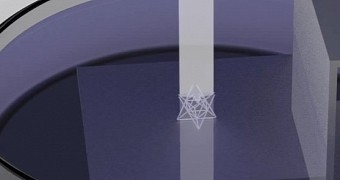The strength of armor, walls, engine parts and pretty much everything else depends on two things: what they are made of, and what the shapes of their components are. But mostly the material, as made clear by all the research into metals and alloys.
However, microengineering, and now nano-level material engineering, have created a means to boost the effectiveness of material by several factors.
It is an ongoing research field, and one that usually has benefits only for specific materials, not all of them, but the occasional breakthrough is more than worth it.
Materials engineers at Lawrence Livermore National Laboratory have just revealed the latest advancement in this area: 3D printed micro-architected lattices.
Projection micro-stereolithography yields great results
Stereolithography is a process by means of which an object is “grown” out of a vat of photopolymer-based resin by bombarding it with UV light and curing it.
Making it work on microscopic level is tricky but definitely possible, as the folks at Lawrence Livermore National Laboratory have just proven.
They employed this method to create a microlattice combining metal and ceramics with flexible plastics.
The result was a material with incredible strength. To give perspective, the material can withstand 10,000 times its own weight.
The geometric layout at the microscale is what determines the properties of all their micro-architected materials, but this latest one is the best they've come up with yet. At least from a toughness perspective.
The microlattice boasts a set of intricate 3D micro-scale geometries. Using polymer as the template, the team built “microlattices” which were coated with a thin film of metal with a thickness ranging from 200 to 500 nanometers.
As you might expect, the material is not only strong but also very light, due to the micro-structural elements in this material designed to be “over constrained.” The best comparison is that the microlattices resemble hollowed metal struts (after heat was used to melt the polymer out).
Compatibility
The micro-manufacturing process works with polymers, metals and ceramics alike, even combinations thereof. For example, a polymer microlattice coated with ceramics led to a 50nm thick coating that gave the material properties not unlike those of aerogel.
Mixing polymer and ceramic in a hybrid microlattice arrangement and repeating the process yielded a fully ceramic material which shows strength and stiffness properties like the other two.
We expect to see the microlattices used in factory assembly lines (to improve manufacturing methods), in making spaceship hulls and engine parts, etc.

 14 DAY TRIAL //
14 DAY TRIAL // 